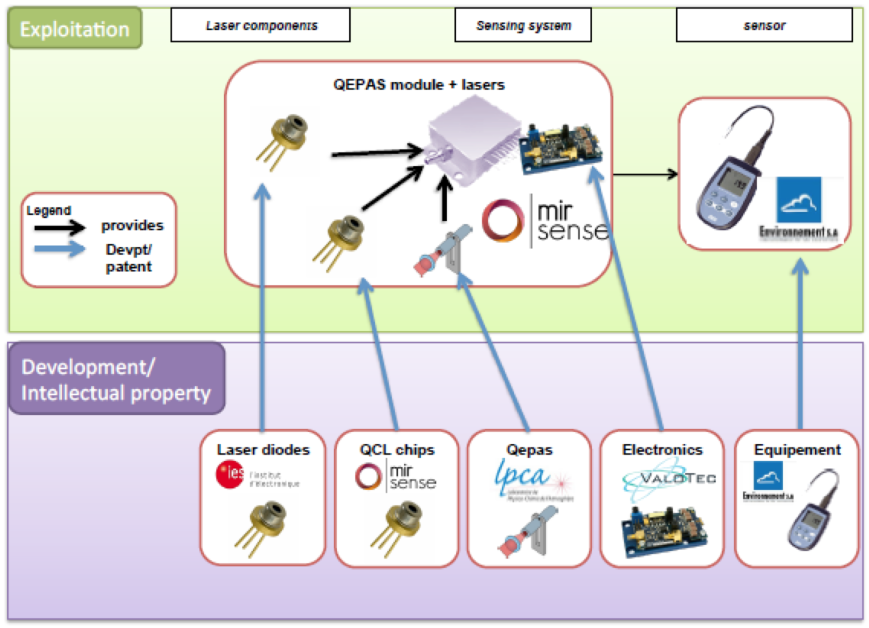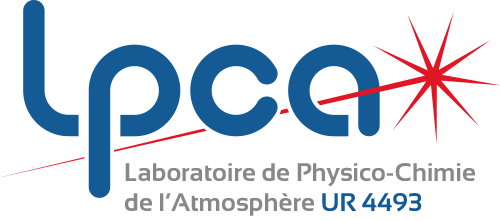ANR MULTIPAS » MULTI‐gas and multi‐source Photo Acoustic Spectroscopy Measurement Platform » (2017-2021)
Institut d’Electronique et des Systèmes (Aurore, PI), L’UNIVERSITE DE MONTPELLIER
MIRSENS
Laboratoire de Physicochimie de l’Atmosphère (Weidong Chen, Tong Nguyen Ba, Eric Fertein), ULCO
VALOTEC
Environnement S.A
Résumé (non confidentiel) du projet en anglais
The MULTIPAS project aims to study and develop a multi-gas / multi-laser sensor, based on tunable lasers photoacoustic spectroscopy, dedicated to ambient air sensing and quantification, as defined by the project end-user, Environnement SA. Even if sensors with high sensitivity already exist, they are limited with some specifications such as : single-gas sensors, very cumbersome, complex to use and maintenance needed, complex calibration …. The proposed sensor will provide equivalent or much better performances in terms of sensitivity and selectivity, but for a much smaller footprint and addressing several gas species simultaneously, which is a major technological breakthrough.
The high performances required for optical sensors with low cost can be achieved by using resonant quartz photoacoustic detection technique (QEPAS, Quartz Enhanced Photoacoustic Spectroscopy). MULTIPAS proposes technology progresses both in the development of laser sources and in QEPAS spectrophone, paying significant efforts on compacification of optical sensing platform and electronic boards. 5 partners are involved, 2 are academic and 3 are industrial partners: the IES, the LPCA, MIRSENSE, VALOTEC and ENVIRONMENT SA.
Semiconductor laser sources (emitting between 2 and 10 μm, single-frequency, high power) will be provided by the IES and MIRSENSE, and implanted by MIRSENSE on a SiGe platform to integrate several sources addressing different gases at different wavelengths on a single chip. This step is the first technological breakthrough that will be achieving for the first time an hybrid multi-source component (SiGe/GaAs/GaSb). Individual sources may initially be supplied to laboratories working on the development of the QEPAS measurement technique. QEPAS offers the advantage of being a simple, compact, yet highly sensitive and selective. IES and LPCA will work on the development and optimization of the QEPAS setups, first with individual sources provided by the IES and MIRSENSE, and then with the SiGe integrated source. The compacification of the whole system without losing the sensitivity combined with a simultaneous measurement of various gaseous species is another technological breakthrough. VALOTEC will be responsible of the electronic maps implementation for various needed functions for the laser sources operation and the QEPAS signal processing.
Environnement SA will qualify the developed sensor by comparative measurements of single-gas sensors.




